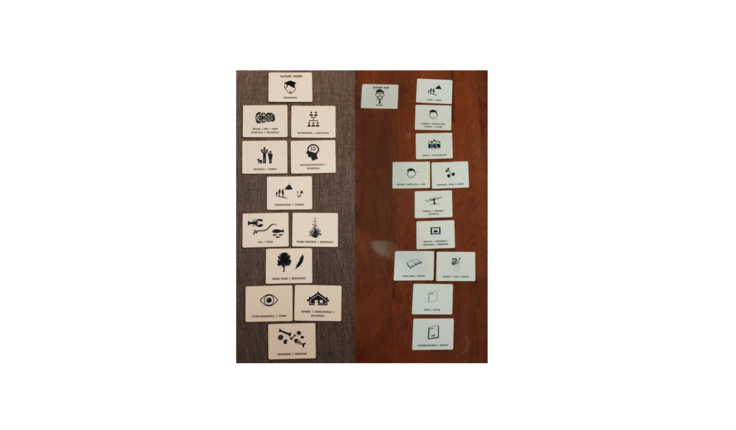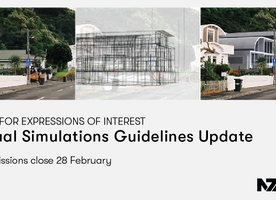News
The Value of Research – Social Preferences and Policy Discourse in Te Wai Pounamu
Posted 27 09 2019
in News

Te Tau-a-Nuku article
Te Tau-a-Nuku member Dr Alayna Renata (Kai Tahu, Tuwharetoa) discusses the research findings from her recently completed PhD, and introduces a wānanga she will hold in Otautahi in November discussing these.
The Value of Research – Social Preferences and Policy Discourse in Te Wai Pounamu
Research is a powerful tool that can unveil misalignments between community values and the legislative frameworks that seek to protect them. In doing so, key research findings commonly highlight immediate areas of concern and inadvertently set a challenge to future researchers, professionals or communities to address the findings. In the instance of my PhD research, conducted between 2013 and 2018, a number of key findings were identified. These pertained to misalignments between landscape association and knowledge sharing preferences of Kāi Tahu community members and the content of 26 planning schemes in Te Wai Pounamu.
My thesis, titled ‘Seeking cultural polyvocality in landscape policy: Exploring association and knowledge sharing preferences’, operationalises an indigenous methodology by applying both qualitative and quantitative research methods. In doing so, it explores Kai Tahu and policy planner preferences whilst cross-correlating these findings with the language of District Plans, Regional Plans and Regional Policy Statements.
The research, which will be presented at a public seminar in November in Otautahi (running in parallel with the New Zealand Institute of Landscape Architects Tuia Pito Ora conference), unveils disparities between the preferences of Kai Tahu and policy planner participants. Furthermore, it highlights inequalities between participant preferences and the content of the 26 planning schemes in question. In considering what they value most about landscapes and what planning policies should seek to protect in Te Wai Pounamu, Kai Tahu and policy planner individuals were given eleven landscape types to rank in order of preference. These included landscapes that were valued for:
- Rawa Taiao / Resources
- Whaipara / Middens
- Maumaharatanga / Memories
- Rawa Taketake / Materials
- Whakapapa / Ancestral
- Whare / Hangatanga / Buildings
- Mauri / Apa / Hahi / Spiritual / Religious
- Titiro Whakatau / Views
- Pakiwaitara / Stories
- Kāi / Food
- Whānau / Family
Similarly, participants were also asked to consider how they prefer to share landscape knowledge or how landscape associations could best be shared with a commissioner, judge or planner. Options provided to participants for ranking were:
- Taonga / Carving / Artefacts
- Haere / Show
- Purongorongo / Report
- Pikitia / Photographs
- Kanikani / Haka / Dance
- Puka Puka / Books
- Ataata / Film / Movie
- Waiata / Moteatea / Sing
- Waituhi / Whakaea / Paintings Drawings / Art
- Reta / Letter
- Korero / Pakiwaitara / Stories / Telling
The November public seminar will unveil the key findings that highlight how Kai Tahu communities and policy planners rank landscape types and knowledge sharing preferences, and will include discussion on the ramifications these findings have for design professionals. This will include specific discussion on the concept of whakapapa attachment to the landscape, which ranked highly amongst both groups, and also the strikingly opposing preferences for knowledge sharing through written and oral mediums.
In analysing the discourse of 26 planning schemes, open coding was applied to assess the occurrence of key words associated with the concept of intergenerational whanau and whakapapa based landscape associations. As such, policies were ranked on their discourse content pertaining to words such as whānau, whānaungatanga, whānui, whakapapa, ancestral, ancestor, ancestry, family, families and relationship, all of which were found to be of significance to both Kai Tahu and policy planner participants. The November public seminar will present key findings that highlight which planning schemes performed highly in this discourse analysis, by achieving over 400 occurrences of the above listed key words, and where opportunities exist to further review the content of those schemes which demonstrated incidences as low as 20 occurrences throughout the scheme.
With a disquieting level of disconnect occurring between what communities value and what the planning schemes of Te Wai Pounamu protect, an opportunity exists for landscape architects, planners and their professional institutes to recognise the value of research findings. This recognition and awareness can inform new methods of working with Mana Whenua and local communities, to give an equitable degree of voice on design and planning projects and increase the likelihood of successfully protecting cultural landscape values.
Ko Takuta Alayna Renata i tuhi
Details of the November public seminar on the research findings will be provided in future E-news bulletins.
Te Tau-a-Nuku is the ropu of Māori Landscape Architects and kaupapa whānau, and is part of Nga Aho - the Network of Māori Design Professionals
17 Jan
Call for interest: updating the Visual Simulation Guidelines

Expressions of interest welcome
Ngā mihi o te tau hou | Happy new year! We have an exciting opportunity for members to kick off …
19 Dec
Meri Kirihimete

The team is taking a break for the festive season! We'll all be out of the office from 20 December, …
19 Dec
President's Update December 2024

Kia ora koutou, Here we are at the end of 2024. It’s been a busy and challenging year in many …
Events calendar
Full 2025 calendar